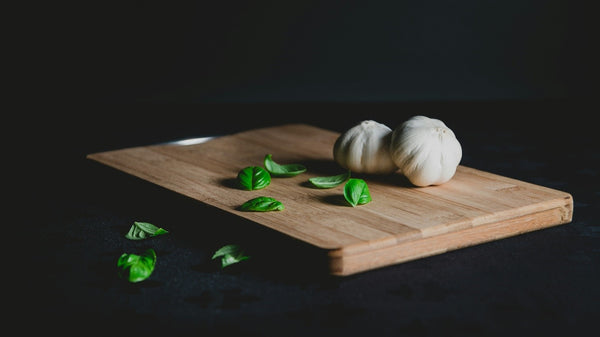
The art of cooking is not just about choosing and executing recipes but extends to the tools we use, such as chopping boards. Understanding the science behind using a chopping board, the variety of materials available, the advantages of choosing a wood chopping board are essential components to achieving a wonderful and effective cooking experience In this blog, we will explore the intricacies of how to clean a wooden cutting board to preserve its aesthetic and functional qualities.
The Science of Using a Chopping Board:
The chopping board is still an essential tool in the kitchen, and is the base on which culinary creations unfold. Its primary function is to provide a stable surface for cutting and slicing precisely. The importance lies in the material’s ability to withstand the force of a knife impact without becoming too soft. Additionally, a quality chopping board should pay attention to the edge of the knife first, ensuring durability and cutting efficiency.
5 Ways to Clean a Wooden Cutting Board:
Proper cleaning is crucial to preserve the integrity of a wooden cutting board. Follow these steps to ensure effective and hygienic cleaning:
1. Immediate Wash:
- How to clean a wooden cutting board starts with immediate washing after use. Avoid prolonged exposure to moisture, which can lead to warping and cracking.
2. Mild Soap and Warm Water:
- Use a mild soap and warm water to clean the board thoroughly. Scrub gently with a brush to remove any residue.
3. Vinegar Solution:
- Periodically disinfect the board by applying a solution of vinegar and water. Allow it to sit for a few minutes before rinsing.
4. Dry Properly:
- Towel-dry the board immediately after washing to prevent the absorption of excess moisture, which can lead to the growth of mould and bacteria.
5. Oil Application:
- Maintain the board's moisture balance by applying food-grade mineral oil or beeswax regularly. This prevents the wood from drying out and cracking.
Different Materials of Chopping Boards:
Different types of chopping boards are available in various materials, each with its unique characteristics. However, the most popular material is wood and plastic.
1. Wooden Chopping Board:
- Timeless elegance.
- Gentle on knives.
- Natural antimicrobial properties.
2. Plastic Chopping Board:
- Affordable and lightweight.
- Dishwasher safe.
- Prone to scratches and cuts.
3. Bamboo Chopping Board:
- Eco-friendly.
- Resistant to moisture.
- Requires proper maintenance to prevent splitting.
4. Glass Chopping Board:
- Hygienic and non-porous.
- Harsh on knife edges.
- Prone to breakage.
Benefits of Using a Wooden Cutting Board:
Choosing a wooden cutting board offers a host of benefits that lead to an enriching culinary experience:
1. Natural Antimicrobial Properties:
- Wood has inherent antibacterial properties that hinder the growth of harmful microorganisms, leading to a hygienic kitchen environment.
2. Knife-Friendly Surface:
- The softer nature of wood is gentle on knife edges, preventing premature dulling and maintaining the sharpness of blades over time. With a wooden cutting board, you can get the best longevity of the knives.
3. Aesthetic Appeal:
- Wooden cutting boards exude a timeless elegance, adding a touch of sophistication to your kitchen.
Tips for Buying a Good Wooden Chopping Board:
1. Material Quality:
Choose hardwoods like maple, walnut, or cherry for durability and longevity. When you buy from thinKitchen, you can be rest assured about the material quality. thinKitchen brings to you some of the best branded wooden cutting boards from reputed international brands.
2. Thickness:
Choose a thick board to ensure stability and prevent warping over time.
3. Proper Size:
Select a size that suits your cooking needs, providing enough space for comfortable chopping and slicing.
4. Maintenance Requirements:
Consider the maintenance routine required for the board. Some woods may need more frequent oiling than others.
5. Reputation of Manufacturer:
Purchase from reputable manufacturers or brands known for producing high-quality wooden cutting boards.
How to clean a wooden cutting board is an essential aspect of maintaining its functionality and preserving its aesthetic appeal. Follow the proper cleaning and maintenance practices, and when buying, consider the material quality, thickness, size, maintenance requirements, and the reputation of the manufacturer. By doing so, you not only ensure the longevity of your cutting board but also elevate the overall experience in your kitchen. If you are looking for solid wooden cutting boards, check out our premium chopping boards collection.

